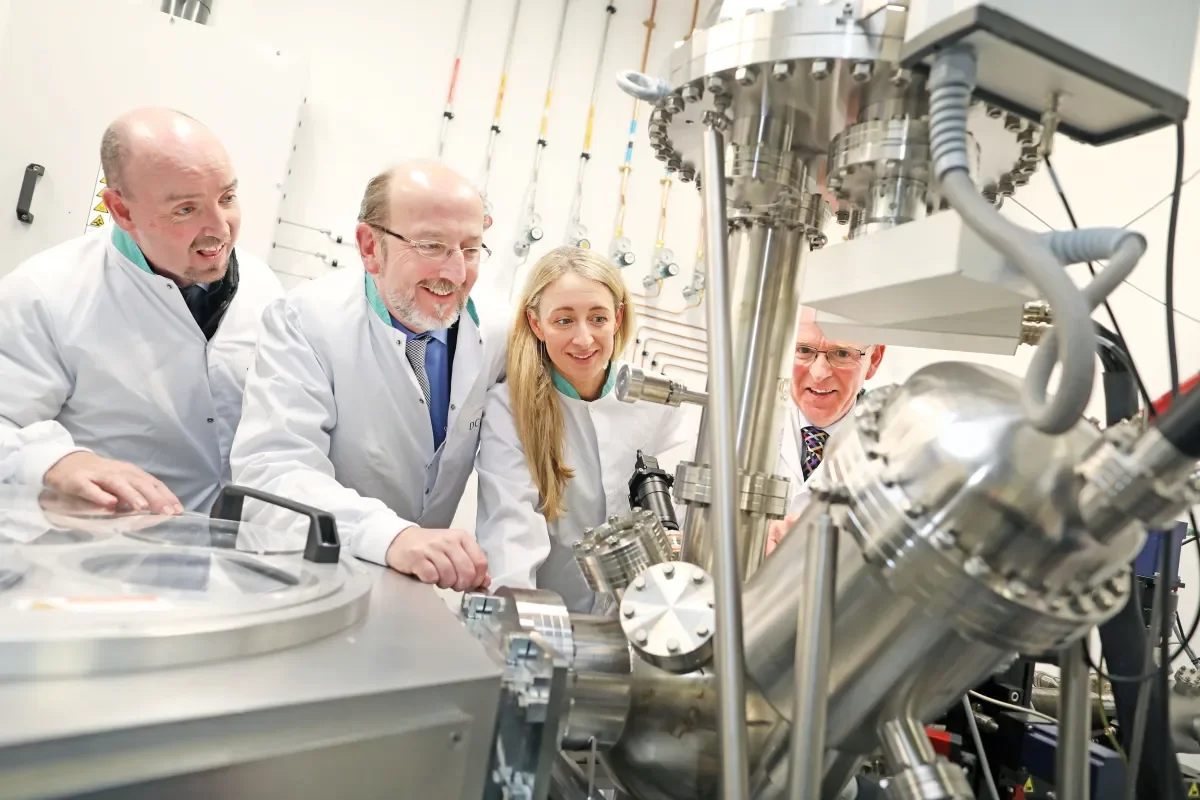

DCU’s Nano Research Facility open access model connects academic research with the nano tech industry
“The open-access model we are employing here in DCU for the Nano Research Facility is the way of the future when it comes to partnerships between academic research and industry” - Prof. Greg Hughes. Prof. Hughes addressed an audience of industry figures today at an event that showcased DCU’s Nano Research Facility (NRF).
The NRF is a 3000 square metre advanced core facility designed to the highest standards of environment control, vibration control, lab services and security. The NRF was established to provide a platform for centrally managed infrastructure that is available through an open access policy both within and external to DCU.
The NRF houses a large range of high end research equipment that will allow it to create core capabilities across areas such as: Nanosynthesis; Nanometrology; Micro and Nano fabrication; NanoBioPhotonics; Analytical Characterisation.
The open-access operating model currently supports many research projects including large SFI funded Research Centres such as I-FORM and the Fraunhofer Project Centre, but it has also provided instrument access, expertise, education, solutions and services to over fifty companies ranging from multinationals to local start-ups.
20 academic institutes, both national and international have used this infrastructure over the past couple of years and companies such as Intel, Abbott, Mallinckrodt, Alltech, Analog Devices and many others have also benefited.
It was funded by both the HEA PRTLI program and the SFI Infrastructure funding program.
What’s in the NRF
Among the facilities available in the NRF are
Integrated Surface Modification and Characterisation Facility - the integrated atomic layer deposition – x-ray photoelectron spectroscopy tool in the NRF is a unique piece of infrastructure enabling the development of advanced manufacturing processes which involve controlling material properties at the nanoscale. It will help to drive research advancements in fields such as high-volume semiconductor manufacturing, biomaterial coatings, photo-electrochemical solar water splitting, and lithium-ion battery research.
Multicolour – Multidimensional Ultrafast Laser Spectroscopy Facility - The facility permits time resolved spectroscopy, on a femtosecond (fs) timescale, at wavelength stretching from the UV all the way to the Mid. Infrared. It houses the only time resolved 2D-IR [Two Dimensional (Fourier Transform) Infrared] spectrometer on the island of Ireland and it permits researchers to make 'molecular movies' - essentially to image molecules as they vibrate, rotate and break up (bond breaking) and make up (bond formation), with frame times of femtoseconds. The addition (bond making) or subtraction (bond breaking) just one atom or small molecular fragment to/ from another molecule can dramatically change its physics, chemical, optical, toxicity, healing, etc. properties.
Atomic Force Microscope - This world class instrument is used to analyse properties of solid samples, resulting in multi-dimensional images of surface properties, down to atomic levels (10 billionths of a metre scale). This is applicable in numerous research areas such as polymers, analytical chemistry, semiconductors, sensor and lab-on-a-chip platforms. It can measure a range of mechanical, tribological and electrical properties of metals, polymers, biomaterials, coatings, and composite materials.
Prof Brian McCraith, President of DCU, said
“Thanks to the support of the Higher Education Authority and Science Foundation Ireland, DCU has created a world-class facility that allows for cutting edge research and an innovative model of industry engagement. That investment continues to show significant dividends. The NRF has already supported more than 100 national and international research projects, and hosted over 50 companies, ranging from multinationals to start-ups.”
Prof Greg Hughes, VP of Research in DCU, said
“It is my belief that the open-access operational model employed in the NRF is an exemplar of how university core research facilities can be managed to maximise instrument utilisation while ensuring a level of financial sustainability to secure long term viability.”
Eamon Sinnott, Vice President and General Manager Intel Ireland, said
“Intel congratulates DCU on the opening of their Nanotechnology Research Facility (NRF) containing the new state of the art SFI infrastructure - compromising in-situ characterisation (XPS) and processing capabilities (ALD). We look forward to engaging and collaborating with Prof. Greg Hughes and the team of experts at DCU on this new infrastructure. The new equipment capabilities will allow for exploration and solution development of many new and advanced integrated circuit fabrication areas.”
